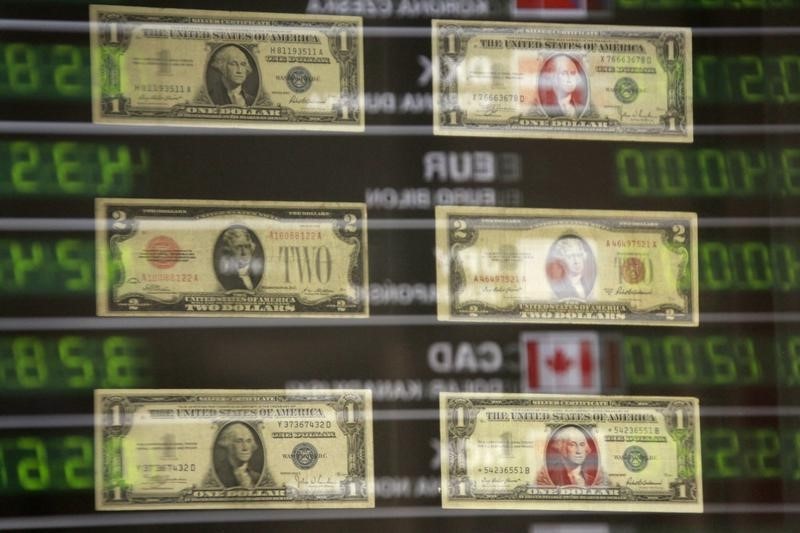* Canadian dollar at C$1.3148, or 76.06 U.S. cents
* Loonie touched its weakest since April 5 at C$1.3188
* Bond prices mixed across the maturity curve
TORONTO, May 24 (Reuters) - Higher oil prices helped the
Canadian dollar reduce its losses against its broadly firmer
U.S. counterpart after the currency weakened to a seven-week low
on Tuesday.
The loonie has fallen 5 percent from its 10-month high of
C$1.2461 on May 3, pressured by speculation that the U.S.
Federal Reserve will raise interest rates as early as next
month, as well as a weaker outlook for Canada's economy
following a strong start to 2016.
The economy may contract by an annualized rate of 1 percent
or more in the second quarter, according to a research note on
Tuesday from BMO Capital Markets, well below the Bank of
Canada's forecast for a 1 percent expansion.
The central bank is widely expected to hold interest rates
at 0.50 percent on Wednesday but strike a more dovish tone.
Analysts will parse its statement for indications of the
economic impact of the massive wildfire in Alberta.
Authorities in Canada lifted evacuation orders on Monday for
all work camps and some additional oil facilities that had been
shuttered when the blaze threatened the nation's energy hub, a
significant step for companies eager to restart production.
At 9:24 a.m. EDT (1324 GMT), the Canadian dollar
was trading at C$1.3148 to the greenback, or 76.06 U.S. cents,
slightly weaker than Monday's close of C$1.3143, or 76.09 U.S.
cents. It touched its weakest since April 5 at C$1.3188.
The loonie's official close on Friday before the Victoria
Day holiday on Monday was C$1.3124, or 76.20 U.S. cents.
Oil reversed early losses, turning slightly positive as
investors awaited inventory data from the United States that was
expected to show a shrinking supply overhang. U.S. crude CLc1
prices were up 0.15 percent at $48.15 a barrel.
The U.S. dollar strengthened across the board and hit an
eight-week high against the euro as investors brought forward
their bets on when the Fed will raise interest rates again.
Canadian government bond prices were mixed across the
maturity curve, with the two-year CA2YT=RR up 1 Canadian cent
to yield 0.62 percent and the benchmark 10-year CA10YT=RR
falling 1 Canadian cent to yield 1.35 percent.
The Canada-U.S. two-year bond spread was 2.6 basis points
more negative at -30.2 basis points, its largest gap since March
28, as Canadian government bonds outperformed at the front and
in the belly of the curve.
